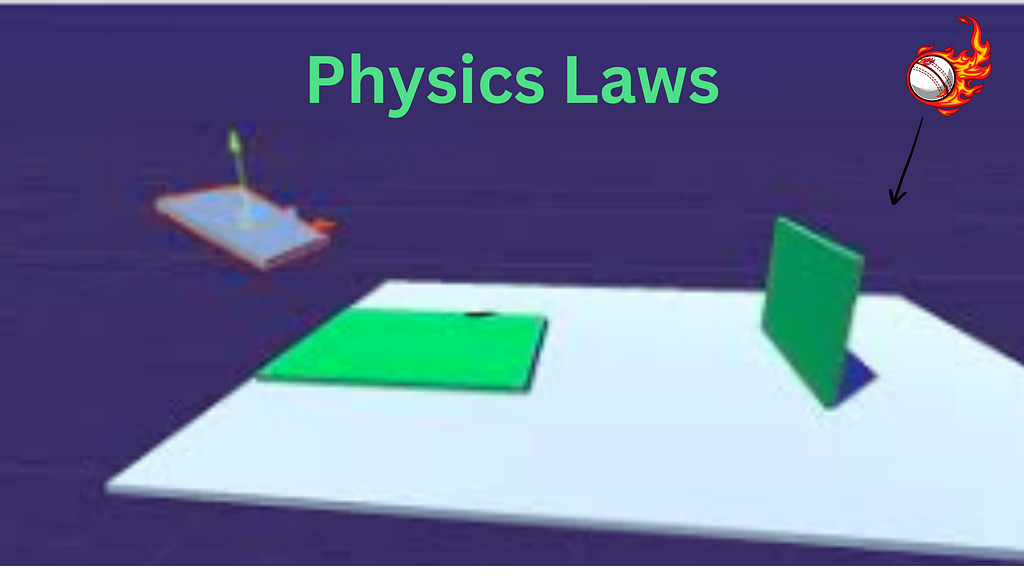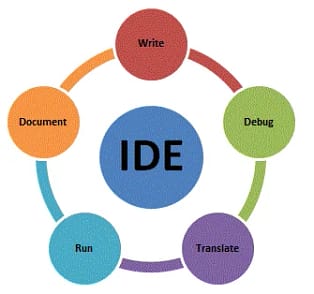Introduction to Physics Engine
Buckle up, fellow tech enthusiasts! Today, we’re diving into the fascinating world of Physics Engines. Ever wonder how your favorite video game characters move with such lifelike realism or how virtual simulations mimic real-world physics?
It’s all thanks to the incredible technology behind these Engines. Join us as we unravel the mysteries behind these digital marvels and explore their evolution, workings, applications across industries, and exciting advancements in 2024. Let’s embark on a thrilling journey through the dynamic realm of these Engine technology!
The Evolution of Physics Engine Technology
Physics engine technology has come a long way since its inception, evolving rapidly to meet the demands of various industries. In the early days, They were basic and limited in their capabilities. However, with advancements in computing power and algorithms, they have become more sophisticated and realistic.
The evolution of engine technology can be attributed to the constant push for realism in virtual environments. Developers strive to create immersive experiences that accurately simulate real-world physics. This has led to the development of complex algorithms that can calculate interactions between objects in real time.
Furthermore, as gaming and simulation technologies continue to advance, so too does the need for more advanced physics engines. Modern physics engines are capable of simulating a wide range of physical phenomena with incredible accuracy, from fluid dynamics to rigid body collisions.
The evolution of physics engine technology showcases how far we have come in creating realistic virtual environments that blur the line between fiction and reality.
How Does a Physics Engine Work?
Physics engines work by simulating the laws of physics in virtual environments. These engines use mathematical algorithms to calculate and predict the behavior of objects based on physical properties like mass, velocity, friction, and gravity.
When an object is introduced into the simulation, the engine applies forces to it according to these properties. These forces determine how the object moves and interacts with other objects in the environment.
Collisions between objects are also calculated by detecting when they come into contact and applying appropriate reactions such as bouncing off each other or sliding against one another.
A physics engine creates realistic movement and interactions within virtual worlds by accurately modeling how real-world physical systems behave under various conditions.

Applications of Physics Engines in Various Industries
Physics engines have revolutionized various industries by providing realistic simulations and interactions. In the gaming industry, engines enhance gameplay by creating lifelike movements of characters, objects, and environments.
This technology is crucial in developing immersive virtual reality experiences that blur the line between fiction and reality.
Moreover, in the automotive industry, engines are utilized for simulating vehicle dynamics and crash tests to improve safety standards. By accurately predicting how vehicles respond to different conditions, manufacturers can design safer cars without physical prototyping.
In architecture and engineering fields, engines enable professionals to simulate building structures under different loads and environmental factors. This helps architects and engineers optimize designs for efficiency and durability before construction even begins.
Furthermore, in healthcare simulation training, physics engines are used to replicate human anatomy for surgical practice or medical device testing. By providing a realistic environment for learning and experimentation, medical professionals can hone their skills effectively.
The applications of engines across industries continue to expand as technology advances toward more sophisticated simulations with real-world implications.

Advancements in Physics Engine Technology
Advancements in Physics Engine Technology have been rapidly transforming the way virtual environments interact and behave. With the continuous evolution of computing power, engines are becoming more sophisticated, allowing for highly realistic simulations.
One notable advancement is the integration of machine learning algorithms into engines, enabling systems to learn and adapt based on real-time data inputs. This fusion opens up new possibilities for dynamic and interactive simulations across various industries.
Furthermore, advancements in parallel processing techniques have significantly enhanced the performance of physics engines, enabling complex calculations to be executed faster than ever before. This breakthrough has paved the way for the seamless integration of physics simulations into a wide range of applications.
As technology continues to progress at a rapid pace, we can expect even more groundbreaking advancements in physics engine technology that will further revolutionize virtual experiences and interactions.
Here are some examples of Physics Engines:
Unity Physics Engine
Unity Physics Engine is a powerful tool used by developers to create realistic and interactive environments in video games and simulations. It provides accurate physics simulations that enhance the overall gameplay experience for users. Here is everything unity.
With Unity Engine, objects interact with each other based on real-world physics principles, making movement and collisions more lifelike.
One of the key features of Unity Engine is its ability to handle complex interactions between various game elements seamlessly.

Whether it’s simulating gravity, friction, or rigid body dynamics, this engine offers a wide range of capabilities that can be customized to suit different project needs.
Developers appreciate the flexibility and performance optimization options available within Unity Engine. By fine-tuning parameters such as collision detection algorithms and solver settings, they can achieve smooth gameplay experiences while maintaining computational efficiency.
Unity Physics Engine continues to be a go-to solution for game development due to its reliability, versatility, and ease of integration within the Unity platform.
Havok physics engine
Havok Engine is a robust and versatile physics simulation software used in various industries, including gaming, virtual reality, and animation. It offers advanced features that enable realistic interactions between objects in a virtual environment.
With its precise collision detection and dynamic simulation capabilities, Havok enhances the overall immersive experience for users by creating lifelike movements and behaviors of objects within the digital world.

Developed by Intel and now owned by Microsoft, Havok has been a key player in shaping the way physics is integrated into modern technology. Its real-time engine allows developers to create stunning visual effects while maintaining optimal performance.
Havok Engine continues to push boundaries and set new standards for realistic simulations across different platforms, making it a go-to choice for many developers looking to elevate their projects with cutting-edge physics technology.
Bullet Physics Engine
Bullet Engine is a powerful open-source engine known for its versatility and efficiency in simulating realistic physical interactions within virtual environments. It has gained popularity among game developers, architects, and engineers for its robust collision detection and dynamics simulation capabilities.
One of the key strengths of the Bullet Engine lies in its ability to handle complex rigid body dynamics with precision and speed. This allows for the creation of dynamic objects that interact realistically with each other and their surroundings, enhancing the overall immersive experience for users.
Developed by Erwin Coumans, Bullet Engine continues to evolve with regular updates and improvements to meet the growing demands of various industries. Its flexibility and scalability make it a go-to tool for creating interactive simulations across gaming, virtual reality, robotics, and more.
Whether you’re designing a high-fidelity video game or engineering a cutting-edge robotic system, the Bullet Physics Engine provides a reliable foundation for implementing realistic physics-based interactions that elevate your projects to new heights.
Challenges and Limitations of Physics Engines
Physics engines, while incredibly powerful tools come with their own set of challenges and limitations. One common challenge is achieving real-time performance without compromising accuracy. The complex calculations involved in simulating physics interactions can be demanding on hardware resources.
Another limitation is the trade-off between realism and computational efficiency. Balancing the need for precise simulations with the processing power required can be a delicate task. Additionally, physics engines may struggle to accurately model certain types of interactions, such as fluid dynamics or soft body deformations.
Moreover, integrating physics engines seamlessly into existing software or game engines can present difficulties. Ensuring compatibility and optimizing performance across different platforms and devices adds another layer of complexity to the development process.
Despite these challenges, ongoing research and advancements in technology continue to push the boundaries of what physics engines are capable of achieving.
Conclusion
As we wrap up our exploration of physics engines, it’s clear that this technology is a driving force behind realistic simulations and interactive experiences. From video games to virtual reality training programs, physics engines play a crucial role in creating immersive environments that engage users on multiple levels.
The continuous evolution of physics engine technology has opened up new possibilities across various industries, pushing the boundaries of what was once thought possible.
With advancements like Unity Physics Engine and Havok Physics Engine leading the way, developers can create more dynamic and lifelike worlds for users to explore.
Despite the challenges and limitations that come with implementing complex physics simulations, the future looks promising as researchers and developers continue to innovate and improve upon existing technologies.
So next time you’re marveling at the realistic movements in your favorite game or training program, remember – it’s all thanks to the power of physics engines working behind the scenes. I hope Now you know everything about it and now you are ready to answer any question about it.
Happy Mod!



